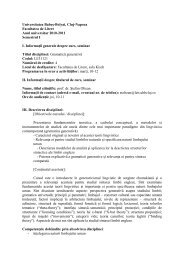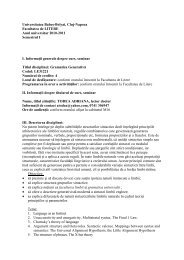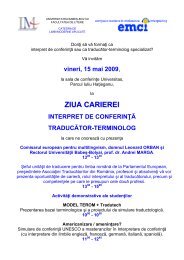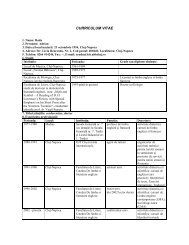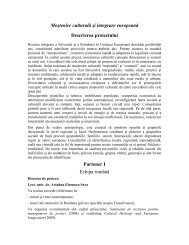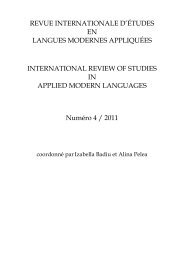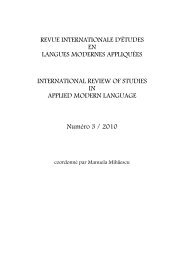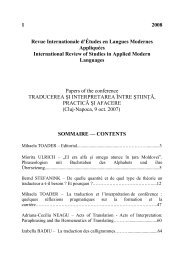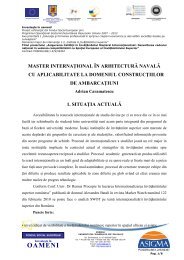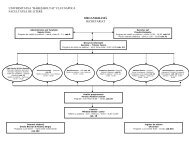Dimensiuni ale limbajului n context carceral
Dimensiuni ale limbajului n context carceral
Dimensiuni ale limbajului n context carceral
You also want an ePaper? Increase the reach of your titles
YUMPU automatically turns print PDFs into web optimized ePapers that Google loves.
a figure of speech in which consonants, especially at the beginning of words, or stressed<br />
syllables, are repeated. It is a very old device indeed in English verse (older than rhyme) and is common<br />
in verse generally. It is used ocasionally in prose. 1<br />
The following slogans contain alliterations:<br />
� “My Goodness. My Guinness.” (Guinness Brewery)<br />
� “Music is art. Muzak is science.” (Muzak Corporation)<br />
� “Drinka pinta milka day.”(National Milk Publicity Council)<br />
In the first slogan, there are three alliterations: on the consonant M from the pronoun My, and on the<br />
consonant G and the syllable -ness from the nouns Goodness and Guinness. The pun built using these three<br />
alliterations is very suggestive in advertising the Guinness Brewery. The double meaning of the noun<br />
goodness expressing on the one hand an exclamation, an admiration and on the other hand the value of the<br />
facts presented in the Guinness Brewery.<br />
In the second slogan, Music is art. Muzak is science, the alliteration is formed by repeating the syllable<br />
mu-, right in the first word from both sentences, which are both short and constructed on the same pattern:<br />
subject plus the verb to be at the 3 rd person singular and plus a direct object. The sentences having the same<br />
structure, the alliteration is a lot more obvious.<br />
In the third slogan, Drinka pinta milka day, there are two alliterations, built on the consonant k and on<br />
the vocals i and a. The slogan contains three invented words, built to create a pun and alliterations, which<br />
create humor and draw the attention of the audience.<br />
An advertising agent uses puns and alliterations in creating slogans, with the purpose to transmit<br />
information more playfully and expecting a reaction of pleasure, happiness or relaxation from the audience.<br />
Puns make people smile or even laugh, then they make them think deeply into the meaning of the slogan,<br />
wanting to discover and understand the ambiguities. If the pun is not humorous, it is ironic, but it is also<br />
interesting and memorable. In conclusion, using a pun is always a good decision in creating a slogan.<br />
4. Ambiguity in Slogans<br />
Ambiguity is the possibility of giving two or more interpretations to a phrase or to just one component<br />
of it, as a semantic consequence of homonymy and polysemy. The type of ambiguity when two meanings can<br />
be attributed to a word or a phrase can also be called double meaning.<br />
1 Idem, p. 25.



